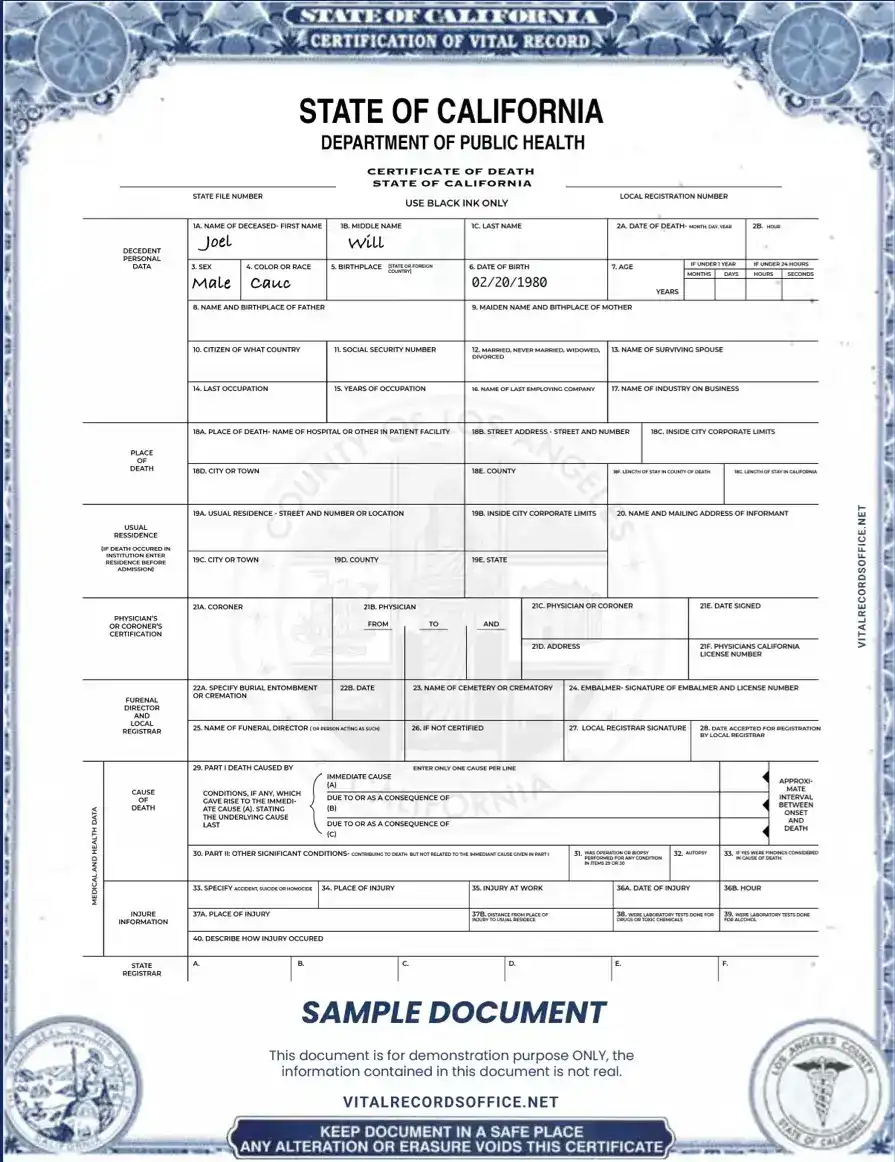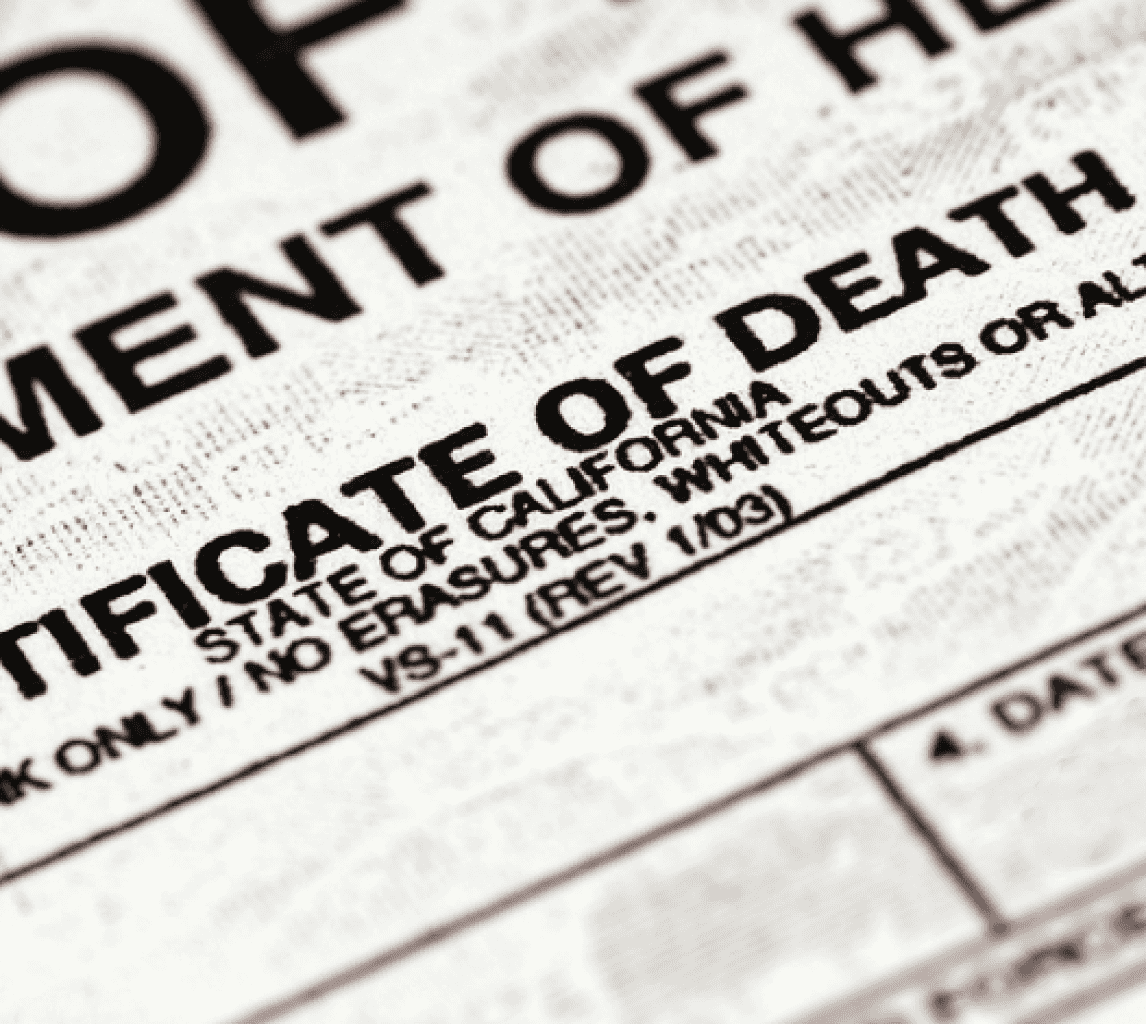The U.S. government started to issue death records in the 1900s, developing a standardized certificate around 1910. Most states in the U.S. follow the same form, which complies with the standard model issued by the CDC's National Center for Health Statistics (NCHS).
A death record must be issued following a person’s death, as the document acts as the only legal proof that a person has died. This is usually done by a registrar of vital records in the state where the death occurred. In other cases, it may be filed by the funeral home or crematorium that is in charge of the person’s remains.
The specific process for obtaining a death certificate can vary between U.S. states. In some states, this type of record is considered public domain, while in other states only close relatives have access to them.
The data collected from death certificates is passed from the vital statistics office onto the NCHS, which uses the information to compile mortality data for U.S. citizens. This data is important for many government and private agencies who carry out research and provide funding.


